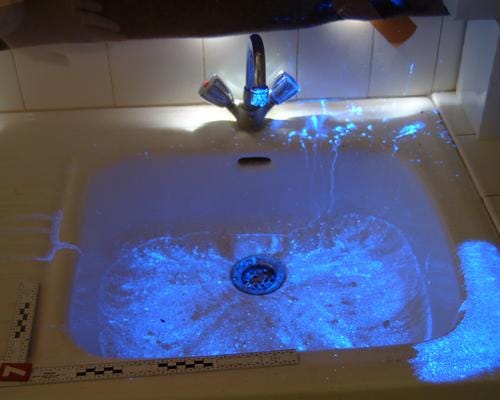Professor McClintock's Luminol Mistake
Dr. J. Thomas McClintock has gone silent, and for good reasons.
Dr. J. Thomas McClintock is a professor of biology at Liberty University and the founder of DNA Diagnostics, Inc. Along with Prof. Moses Schanfield (who has since died), McClintock provided reports to Söring’s lawyers which purported to demonstrate that two unknown men deposited DNA at the crime scene at Loose Chippings.
This was always the minority outlier position. All independent experts, including BettyLayne DesPortes, Dan Krane, and a German geneticist Söring contacted in early 2020, concluded that the most likely explanation for the DNA results was that all DNA at the crime scene was deposited by Derek Haysom. McClintock was later asked by the journalists behind Small Town, Big Crime to re-analyze the data and admitted that it was indeed possible Derek Haysom had deposited all the DNA.
McClintock is to be congratulated for his honesty. However, his association with the Soering case has done him no favors. In late October and early November, Team Soering generated a new blast of publications about the case, including the “Chuck Reid Report” and the podcast “The Jens Söring Case: A New Verdict”. The purpose was to ride the wave of publicity from the Netflix documentary series Till Murder do us Part, which Soering thought would make the case for his innocence.
McClintock’s Luminol Mistake
In an episode of “A New Verdict” entitled “Suppressed and New Evidence”, McClintock says he actually went out and bought the same model and car (a mid-80s Chevrolet Chevette) that Söring and Haysom had rented on the weekend of the murders. Along with his biology students, McClintock recounts, he conducted experiments in the car to see whether blood would still show up in a luminol test even after it was superficially cleaned away and is no longer visible to the eye. The host of the podcast, Daniela Hillers, had earlier stated that luminol would reveal even “pin-point” size bloodstains.
Even when McClintock and his students had cleaned off the bloodstains and waited some time, the luminol test was still positive. McClintock says that this is “not in line with what Elizabeth was saying”. Elizabeth testified that there were bloodstains in the car and that she had cleaned up the car twice in the early morning of 31 March 1985. Yet even if she had indeed cleaned up the bloodstains, McClintock says, they would still have shown up during a luminol test, which is sensitive enough to detect bloodstains which have been cleaned and are invisible to the naked eye.
Ergo, the podcast “A New Verdict” concludes, the car could not have had bloodstains in the first place, since Elizabeth’s clean-up would not have been enough to render them invisible under luminol testing. Which, in turn, means that both Jens’ and Elizabeth’s confessions must be false, and the state’s theory incorrect. The jury was never told of the negative luminol test. This, the podcast argues, is a piece of “suppressed” evidence the jury should have heard.
The problem, though, is that the luminol test was meaningless. In all likelihood, this is why the luminol test was never discussed: Because every participant in the trial, including the defense, knew it wasn’t even worth mentioning. Why was it meaningless? Because it was only conducted on 25 June 1985 (as Chuck Reid notes in his own report), 87 days after the murders. Further, any bloodstains in the Chevette would have been smears or “transfer stains” from bloody clothing or skin touching a surface. Söring wrapped up his injured left hand in a towel or rag, and wrapped himself in a sheet to try to minimize bloodstains in the car, which he obviously knew would be in strangers’ hands the next day.
Even so, the delay wouldn’t have been a problem if we were talking about a normal car: Bloodstains might still show up under luminol months after they were deposited.
But the Chevette was a rental car.
In a busy college town over the summer, the car would surely have been rented out at least 10-15 times over a three-month period, probably by college students like Soering and Haysom. And each time it would have been professionally cleaned using commercial-grade detergents and wet/dry vacs or steam cleaners. And the car was already “spotless” when it was returned on the 31st of March 1985, according to the rental car employee — it was much cleaner than usual.
Deep bloodstains can still yield luminol results after a few casual cleanings by laypeople. They cannot survive dozens of intensive steam-cleanings by professionals trained to remove every trace of every stain. That is the uniform opinion of experienced professionals I’ve asked.
I reached out to McClintock to ask him whether he knew the luminol test had only been performed three months after the murders. I also asked him whether he believed a superficial “smeared” transfer bloodstain (not a drop or pool of blood) could survive dozens of rounds of professional cleaning.
McClintock did not respond. He also refused to speak to reporters from German public broadcasting for their documentaries. This is, alas, the typical response when a member of Team Soering realizes they’ve been had. They retreat into silence. If you ask me, McClintock is probably regretting the day he heard the name “Jens Soering”. Like so many others…




